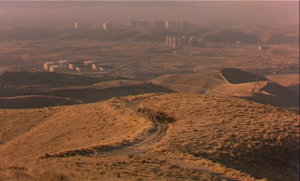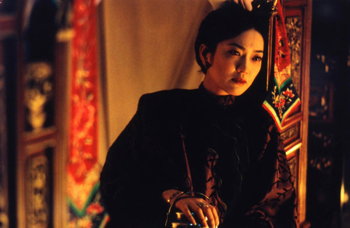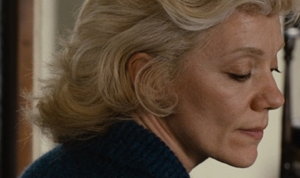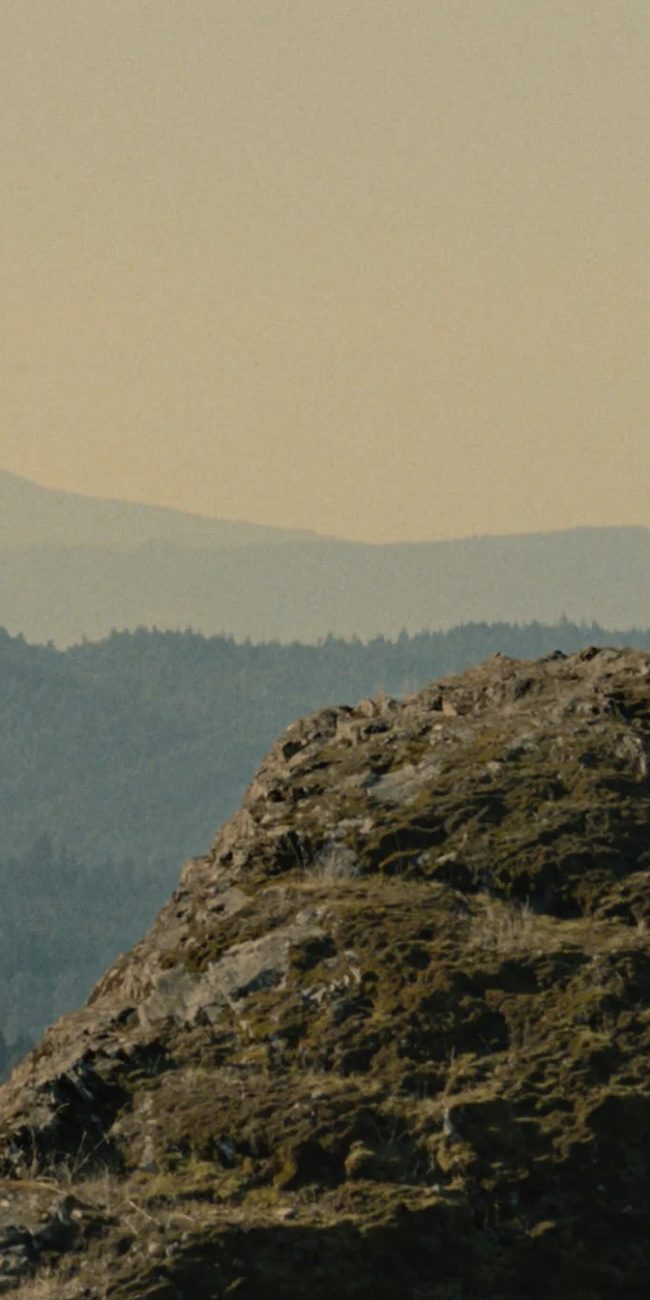This year, the New York Film Festival celebrates its 50th anniversary, and its 25th with Richard Peña at the helm. Hired in 1988 to replace Richard Roud, the NYFF’s founding director, Peña has served as both the festival’s Selection Committee Chair and the Program Director for its parent organization, the Film Society of Lincoln Center. He’ll step down from both positions at the end of the year, with Kent Jones replacing him at NYFF and Robert Koehler taking the reins at FSLC. Rose Kuo will remain as Executive Director of FSLC.
During Peña’s tenure, the Film Society has grown physically (the three-screen Elinor Bunin Munroe Film Center opened last June, joining the mainstay Walter Reade Theater) and in scope (offering year-round retrospectives, first runs, new-media and educational programs, family screenings, and more), while the NYFF has stayed true to its original mission of bringing New Yorkers a carefully curated selection of the best in world cinema. Peña’s years at the helm have coincided with a great expansion in American cinephiles’ awareness of filmmaking activity around the globe—from China’s Fifth Generation, to new waves of talent coming out of Iran and South Korea and Romania, to a recent resurgence in Latin American cinema—and no programmer of our time has done more to promote and encourage these trends.
I’ve known Richard since I was a grad student at Columbia University’s Film Division, where he has taught for many years, and he’s been an unfailingly generous mentor to me, as he has to countless others. A few weeks ago, I visited him in his office at the Film Society, and he was characteristically thoughtful and eloquent when discussing the changes in film culture he’s witnessed over the past quarter century.
The NYFF is holding a gala tribute, “Richard Peña: 25 Years,” this Wednesday at 8:30pm. Go here for more information.
Hammer To Nail: I wanted to mainly talk about how during your years as a programmer, Americans’ idea of world cinema has really expanded, and you’ve been in the forefront of that. When you were growing up, was there a conscious decision on your part to learn more about world cinema, considering your background, and your interest in Latin American cinema? [Peña’s parents were immigrants from Spain and Puerto Rico, and he wrote his senior thesis at Harvard on Brazilian and Argentine cinema.]
Richard Peña: I think I always grew up with a little bit of a chip on my shoulder about what I felt was America’s closed-mindedness, or downright ignorance, about the rest of the world. I have an aunt who’s elderly, my mother’s sister, and she reminded me [recently] of a time when I was in 5th or 6th grade. We were studying European geography, and the geography book had railroad maps. And when it got to Spain, there were no railroads. There were railroads in Germany and France, but none in Spain. So I raised my hand and said, There seems to be a mistake here, and the teacher said, Well, that’s because it’s a very primitive country, they don’t have railroads. And I knew very well that a little before that, Spain had launched the Talgo, which was at that point the fastest train in Europe, so I said, Well, that’s not true, and I think I ended up getting detention.
Growing up in my family, I always knew that there was something beyond what was being offered to me by America, that there was another way of looking at things. And in my house, we spoke about los Americanos—the Americans—that was obviously not us, that was somebody else. But [all of] America was very much like that [then]. I remember one time I had a conversation with Scorsese about this, how people defined themselves ethnically and how long it took to become an American.
So from an early age I had a proclivity to want to look at things that were off the radar a little bit, starting with my own Latin heritage, and then—I was lucky enough to go to a high school that offered Russian, so I took Russian classes, and I think that just expanded outwards. Also, during these years, America became once again an immigrant nation, you had very large communities of people from Asia, Latin America, from Africa, from the Middle East. And then finally, the digital revolution, the video and digital revolution, just put so many more things in our grasp. Things that in the ‘70s or early ‘80s I read about and said, Boy, that sounds interesting—now I could actually see them and organize shows around them. So as time went on, both my own background and a greater profile in the United States of non-European people, and last but not least the availability of new work through digital means, formed a sort of perfect storm for us programmers who were interested in going in that direction.
H2N: You’ve spoken about how originally, the identity of the New York Film Festival was set to some extent by Amos Vogel and his interest in avant-garde cinema and American independent cinema, and Richard Roud, living in Europe much of the year, who was deeply involved with European film. So it seems like a natural evolution that when you took over the job in 1988, you would expand the scope of it, considering your tastes and all these other currents that were happening.
RP: I guess. I took over right at what was an upward trajectory for Chinese cinema—I mean, Chinese cinema was certainly the great news of the 1980s for everybody who was involved in film curatorship. There were suddenly not only old films to discover, as we had our first [retrospective] series of cinema from the ‘30s and stuff like that, but of course the Fifth Generation of [Chinese filmmakers], the Zhang Yimous and Chen Kaiges, were just getting going, Hou Hsiao-hsien was on his way to becoming a major filmmaker, the Hong Kong cinema had developed into this very interesting counterpoint to Hollywood. So I think it was Chinese cinema that really exploded it, because prior to that, you’d talk about Italian cinema of the ‘50s or the French cinema of the ‘60s or the German cinema of the ‘70s—most of our attention was really focused on Europe. You could say that Chinese cinema was the first non-European cinema to really open it up—I guess Japan many years before that, but I think in a way the Chinese cinema had an even bigger impact.
H2N: I went digging into the archives of the New York Times to read about some of the coverage of your early years here and found a comment that David Denby made [in 1995]: “The difference between Richard Roud and Richard Peña is the difference between a flourishing European cinema and a collapsed European cinema…. Peña has made a series of very shrewd accommodations to what is essentially a much-reduced artistic situation.” Granted, it was 25 [sic] years ago, and I’m sure he might have a different view now, but it seems that, certainly earlier in your tenure, some people thought your tastes ran to the so-called “exotic” or “obscure” simply because it wasn’t the idea of art cinema that they had grown up with.
RP: Well, I think part of it was that it was hard for people to accept works from China or Iran or wherever to be on the same aesthetic level as works from, say, Antonioni or Bergman. I think there was, even for liberal-minded people, almost a knee-jerk reaction. David, to his credit, when Certified Copy came out a couple of years ago, wrote a very eloquent defense of Kiarostami, so clearly he’s come around, at least on Kiarostami, and I think a few other people too. So… I can actually remember a reporter from the Washington Post interviewing me saying, Do you really want us to believe that films from China and, I don’t know, Mexico are as good as films from Europe? Almost like, How could you possibly imagine anyone on Earth would believe you? She didn’t say that, but that was kind of dripping from the tone of her voice. What can you say? It took people a while to get used to it, but I think they did. And that is the only good thing I can tell you, Nelson, about getting older. You really get to see things like this, that began at zero, suddenly flourish. I can remember, it must’ve been about ’97 or ’98, when we had some Iranian films in the festival, and it was sold out and there were all these people outside begging to get in, and I thought, This is amazing—ten years ago, who would’ve thought that New York crowds would be fighting to get into an Iranian film? So you’re happy to see that kind of progress happen.
H2N: From the Times’ coverage of your first year as festival director, 1988: “[M]ovies from China, South Korea, Portugal and Rumania will be shown at the annual event for the first time.” Now it would be hard to imagine a year in which films from at least one of those countries were not shown.
RP: Yeah, obviously, these became major sources for cinematic excellence—again, some of it was just availability. Some of it was interest, but I think a lot of it really was availability. I honestly believe that if Richard [Roud] had seen many of the films that we’ve programmed, he would’ve liked them. It was a lot easier for me to venture into these “exotic” cinemas than it would’ve been for him.
H2N: You’ve spoken about how, in your view, the art-house audience has become more conservative, less adventurous, less open to experimentation…
RP: Definitely. It’s a larger issue, but—the United States had an education revolution in the ‘40s and ‘50s. People began going to college in numbers they never really did before. At the same time, there were hundreds of thousands of men and women who had served in the United States [military], both in Europe and in Asia, who came back and whose attitude toward the world was sometimes shaped by that. The great success of the Italian Neorealist films in the ‘40s was partially based on people saying, These movies are showing me a world that I’ve never seen onscreen before. I’ve never seen people act like this. And it’s much truer to my experience. That was really the beginning of a kind of reconsideration of cinema. People went to foreign films to get things they weren’t getting from Hollywood films. They now suddenly had a choice. And along with the rise of a lot of independently owned and operated cinemas after [the Paramount consent decree of] 1948, there was really a much greater presence of foreign films than there is today in the United States. All that with a certain post-war sense of needing to establish new forms, new ideas—you know, the ‘60s. It was a time when people said, The world has changed, and we need a cinema that’s changing with it. Because of that there was a curiosity about and acceptance of a modernist European cinema that then was replicated in other parts of the world. Think of it—where would a film like L’avventura open today? It wouldn’t.
H2N: Cinema Village for a week…
RP: Maybe, or here, or Film Forum, or something like that. But it wouldn’t run in the way that it ran back then. Or [any of] those films. And that was the high point, up until around the mid-’60s, then it began to decline—and then of course, we got to the Reagan-Bush era, and I think a genuine closing of the American mind, a genuine conservatism that came up—people were no longer as generous in terms of being willing to experiment with [watching] films. Films became, in our late capitalist era, products, and people talk about them in those terms. And I think that’s why we began to descend into this era of sequels and prequels and numbered films, because people increasingly wanted to go to the movies to get something they knew they were going to get. It’s like going to a certain brand-name restaurant: you know it’s always going to be the same thing. And in a way, that took the adventure out of moviegoing. People would say, Oh, what thrills—yeah, but they’re expected thrills. Like, if you go on a roller coaster, you know how you’re going to feel. It’s fun to feel it again and again, but there’s nothing new to the experience. Rarely. Whereas for me in the ‘60s, the wonderful thing about movies was that they were really seen as a kind of adventure. At their best, they were taking you places you’d never been before, they were challenging you with ideas and images. People shy away from that now. They’re much more reluctant, I think, to be confronted or challenged that way.
H2N: How much of it is, do you think, competition from other forms of entertainment, like the renaissance in high-quality television, or the Internet and so forth…
RP: I think some of it’s that. Some of it is, we just live in a very different time. We live in a time of winners and losers—when you read, for example, reports from Sundance, rarely do you get reports that tell you about the new trends in cinema. It’s all box office, it’s who sold what to whom for how much—that I have to read in the arts pages? Can’t I read that in the business section? It seems that that kind of discussion of cinema is really what’s left. I’m always amazed, people in my building will come up and tell me what the grosses were for films over the weekend—how you do know this? Why do you care?
H2N: Yeah. It’s as if people identify more with the film as…
RP: …as a product. And it’s like sports, who makes how much—it’s a way of reducing everything to a commodity.

Taste of Cherry (NYFF 1997)
H2N: Your work as a programmer has been based on the premise that the Kiarostamis and the Hous and so forth are the Antonionis and Godards of our time, and yet the reception by even the educated urban audience has not measured up.
RP: Right. Why, exactly, I’m not sure. When I was in college in the early 1970s, almost everybody that I knew was completely film-mad. People went to the movies all the time, they talked about movies all the time—and not just commercial films: if there was a new Buñuel, everybody went to see it the first weekend. And I might be the only one of my close friends who went into film professionally, but everybody else was just as interested in it. I think for people that are 10 or 15 years younger than me, cinema didn’t have the same allure. Why that happened, I don’t know. But I think people became much more interested in music, or other kinds of things, and cinema no longer had that sense of being the cool or the hip. Maybe that’s too general a statement, but I no longer saw that hunger in people.
H2N: I’ve seen a sort of parallel with people my age who grew up with the late ‘80s, ‘90s explosion in American independent film. Even my friends who weren’t really cinephiles were turned on by the idea of going to see a cool new indie film by some unknown director. I don’t see that as much even with my students these days. Because again, there is competition from all these other forms of entertainment, and you no longer have to look to U.S. independent film as the only place to find interesting alternatives to mainstream entertainment.
RP: I think it’s all that, and also there’s digital accessibility. There was a time when… I was going to school in Boston, but I would hitchhike to New York to see something that was playing just one time at the Japan Society, ’cause I figured if I didn’t see it [then], I’d never see it—This is it, I better get there! No one feels that way anymore. Everyone feels it’ll be on Netflix next week or something like that, so there’s no longer that kind of cinephilic drive where people plan their week around screening schedules. I mean, some people probably [still] do that, but not many, not like there used to be, because there’s just not that sense that you must see it now.
H2N: Right. Which maybe counteracts some of the more depressing trends we’re talking about—the fact that everything is available to everybody worldwide, you don’t have to live near New York or Paris to be able to follow what’s happening in world cinema today, which is probably a good thing.
RP: Which is good. But we wonder how much that stuff is being seen, and the effect it’s having.
H2N: A lot of your work has been not only keeping up with what’s happening now, but mounting these massive retrospectives, and trying to bring to light individual directors or even sometimes entire countries that have been overlooked before.
RP: I like to think of myself in some broad term as an educator, and [as being] in the film history business. When there’s a movement like Korea, let’s use that as an example, where suddenly there’s this very rich contemporary cinema happening, and four, five, six really interesting filmmakers, it’s good to show people that this didn’t come out of nowhere, that in fact there’s a history to it. And just for the pleasure of knowing more about film history, so that we can see how Korean [filmmakers] responded to modernism, or to see how Koreans adapted literary works, or all kinds of different things. So those [retrospectives] have been great because they’ve not only exposed me to a lot of really terrific films, but provided some necessary background so that people could appreciate even more the contemporary work.
H2N: One of the major discoveries for me of any program I’ve seen at Lincoln Center was Pialat, at the retrospective a few years ago.
RP: Maurice Pialat was someone I had the pleasure and honor of knowing reasonably well. I met him many years ago and we remained friendly and I had the chance to do two retrospectives of his work. A major director, somewhat unclassifiable, but just about all his films are stunning and enormously moving experiences. Those who see Pialat and really get the work are profoundly taken with it. But he’s never been a crossover figure. Loulou was probably his biggest box office hit here in the United States—none of them have really reached audiences. But they are often tough pills to swallow.
H2N: We were talking before about this old-fashioned idea of a heroic age of European cinema that’s passed—I think a director like him is someone who fell through the cracks of that view of film history.
RP: Well, exactly when Pialat was coming up, say in the early ‘70s, was when that heroic image or whatever was dying. By then, filmmakers like Truffaut and Chabrol had basically become mainstream filmmakers, Godard and Rivette were making experimental films that weren’t really being seen, Rohmer continued doing Eric Rohmer films—but people like Doillon, people like Garrel, people like Pialat, who would’ve been the natural heirs of the French New Wave, never got the boost that they might’ve needed in order to really reach the American public.
H2N: You’ve done as much as any programmer to bring Iranian cinema to people’s attention.
RP: I’m pleased to see the continuing vitality of Iranian cinema. Certainly times are tough there, you have a government that’s fairly hostile to the filmmakers, and yet, it goes on. There’s a very interesting young generation [making] short films, documentaries—of course, digital helps a lot because people can make films that can’t be stopped, or can’t be stopped as easily as they could’ve if they were on celluloid. It continues. It’s a very precarious situation because of how deeply controlling the Iranian government has become. When we really began to promote it in the early 1990s, it was a moment when [the government] was pulling back from a very strict control over daily life—it’s not that they repealed things, but they were willing to let people live a little bit more and do what they wanted a little bit more. And I think the filmmakers by and large weren’t really challenging that government either. But by the time 2000 came around there were not only more filmmakers that began to challenge different aspects of [life in] Iran, you had an increasingly conservative government that saw itself as very hostile towards this Iranian cinema. And indeed, its international success only made it that much more suspect. Rather than being a positive thing, it was treated as a very negative thing. It must show that you’re doing something very wrong if the West likes it.
H2N: You’ve written recently about how Latin American cinema seems to have the buzz about it in international circles that let’s say Asian cinema had ten or fifteen years ago.
RP: I can remember when I first came here, meeting some Latin American friends, filmmakers, who were like, Oh boy, now we have a chance!—and then there weren’t really a lot of Latin American films [my] first few years in the New York Film Festival. You know, you can’t will a cinema into excellence. Those were really lean times for Latin American film; the ‘80s and most of the ‘90s just weren’t brilliant times. What happened? Who knows, but somehow the talent cloud came back, and by 2000, 2005, it was and now it is, I think, the area of the world with the greatest cinematic creativity. And sadly, I find that some of the Asian cinemas that we were very much promoting a few years ago are in a little bit of a lull. Korea’s a good example—we still will see fine work from the five or six directors that we know and we’re sure each of their new films will be of interest, but by and large there hasn’t really been a second wave that’s followed up, new directors who have come up in the wake of Bong Joon-ho or Park Chan-wook or people like that.
H2N: Speaking of waves and movements, the Romanian New Wave has been a major event of the last several years.
RP: I have kind of a curious relationship to that, because in the 1980s I was actually invited to Romania to organize a film series, and I met a lot of Romanians and became close to a few. This is back when I was working in Chicago [prior to joining FSLC, Peña was the director of the Film Center at the Art Institute of Chicago] —we did a couple of Romanian film series back then. So I was aware of Romanian cinema; in fact, as you mentioned, my first year at the [NYFF], we showed a Romanian film. After that, every few years another Romanian film would pop up, but happily, when—I guess the first one that people usually cite is The Death of Mr. Lazarescu—we were there already with a nice relationship with that cinema. So, soon after that, it became a kind of standard feature both at New Directors [New Directors New Films, FSLC’s annual program co-curated by the Museum of Modern Art] and the New York Film Festival.
I also had the chance a few years ago to do a series where I was able to bring together the new Romanian wave and the older wave from the ‘80s that I had been so impressed by, and it was interesting, there was this kind of—I don’t want to say hostility, but discomfort—I think what happened was, these were filmmakers who had made very strong films, but they were working under Ceaușescu and the films couldn’t be shown, or they were mutilated, or this or that, and they never got their due, and they were now teachers, or working outside Romania, or doing work they weren’t particularly enthusiastic about. And here were these young turks that were coming up and getting all the kudos that they wish they would’ve had. It’s a little bit like Chinese cinema in the ‘80s too: just at the moment when people like Xie Jin were beginning to get international retrospectives—we did one in Chicago, there was one in Nantes, there was one in London, and people were praising this wonderful Chinese filmmaker—suddenly there are these upstarts from the Beijing Film Academy who become the new face of Chinese cinema. So Mr. Xie, who was a wonderful man and a great artist, made some very intemperate remarks about those films, and I think at least some of it had to be a personal [thing]—you know, Wait your turn, buddy. He had waited a long time for international retrospectives, and now suddenly, these guys were the toast of the town.
H2N: I asked you once if you had ever explored filmmaking yourself when you were younger, and you said, Oh, no, I was meant to be a bureaucrat. [RP chuckles] And I remember thinking, Well, I hope—I assume—he’s being falsely modest, because you have helped to write film history in this job, and you have had an impact on it.
RP: Well, that’s very kind of you. I’m not an artist, and it’s never been something I’ve dwelt on very much. I did some theater in college, and I enjoyed that, but I never had the vaguest plans to continue with it. When I say I’m a bureaucrat, it’s partially true, but also, I think I am good at organizing and presenting and packaging and I think that I have a reasonable public face and I have a sense of trying to interest people in new things. And that goes to my larger role as educator, which I do specifically at Columbia as a professor, and in a more general sense at Lincoln Center in my programs here. So yeah, I think I’m well suited for that, that seems to be what my calling has been, and I’m just lucky enough that I’ve been able to exercise it at a fairly high level.
H2N: I know this is a very broad question, but—we’ve talked in this interview about how your own tastes have helped shape the programming here, but at the same time you’re part of much larger currents—any thoughts on the role of individual perspective, individual subjectivity, compared to larger movements and changes in taste and opinion?
RP: Well, there’s always a little bit of a dialectic between the two. If in 1970 I had really decided that Chinese cinema was where it was at, it would’ve been pretty difficult for me to do the kind of work that I was able to do with relative ease in the 1990s. David Bordwell writes about the relationship between period and film style—what you could’ve done [during a given time period], what kind of film could you make in 1940, and could you have made L’avventura in 1940—and why you couldn’t. I think there are certain things like that with programming. You can talk about it, but it would’ve been awfully difficult to have tried that at that point. I was lucky enough to work during a time when the possibilities became much, much greater.
— Nelson Kim














